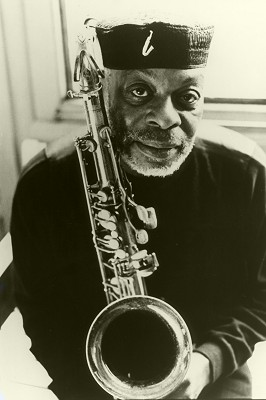
The great saxophonist Dewey Redman passed away on September 2. Here’s a tribute from All About Jazz.
Comments closedpoet, interviewer, musician, traveler

The great saxophonist Dewey Redman passed away on September 2. Here’s a tribute from All About Jazz.
Comments closedMusic writer Jeff Vrabel reviews new discs from Audioslave and Method Man. Find the links at JeffVrabel.com.
Comments closedIke Sturm Ensemble
Next Friday, September 8 – 8pm
Saint Peter’s Church, NYC
619 Lexington Ave (at 54th St.)
212-935-2200
$10 suggested donation
ikesturm.com
THE BAND:
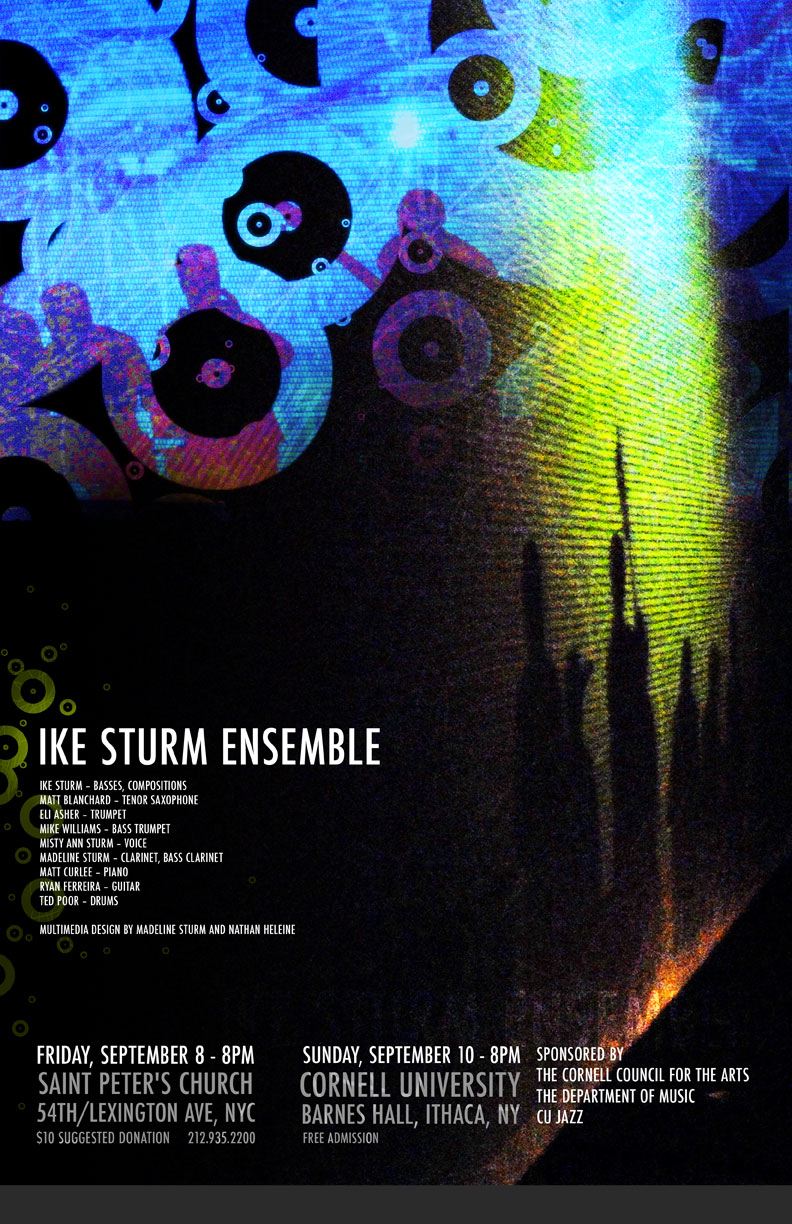
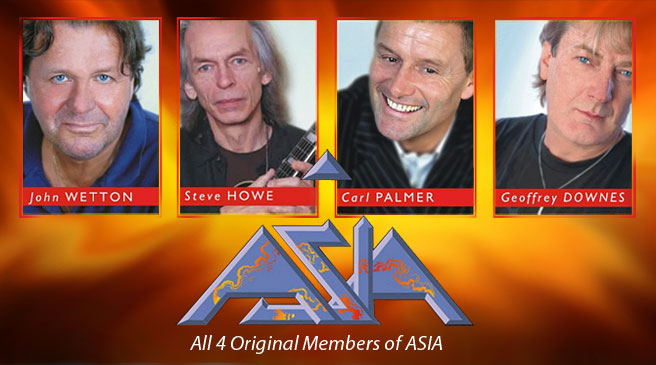
UPDATE: You can hear another version of this review on The Jason Crane Show. Check out Show #8: Rock ‘N’ Roll – And Howe!.
When I was in high school, a group of my friends had a band called Fair Warning. They played tunes by Rush, Genesis, INXS — all your favorite 80’s bands. As it turns out, the one band they didn’t play tunes by was the band they most resembled: 80’s supergroup Asia. Judging by tonight, Fair Warning should get back together. They could give Asia a run for their money.
Tonight in Rochester, the original four members of Asia reunited for the very first show on their 25th Anniversary Tour. These four guys represent a cross-section of prog rock from the 70s. Bassist/vocalist John Wetton played with King Crimson in arguably its finest incarnation; drummer Carl Palmer was one-third of Emerson, Lake and Palmer; guitarist Steve Howe was a key member of Yes; and keyboardist Geoff Downes was … er … in the Buggles. He also played in Yes for about 30 minutes. OK, so they weren’t all super.
When the band put out its debut album, Asia, in 1982, they scored an immediate hit with the song “Heat of the Moment,” which peaked at #4. They followed that up with more radio hits — “Only Time Will Tell,” which hit the Top 20, and “Sole Survivor.” Within three years, though, the original gang of four disbanded. Although the band carried on with various members, it was never quite the same.
It’s not really the same now, either, although tonight wasn’t as bad as it could have been. First off, John Wetton sounded great. Really great. Schockingly good, in fact. He always sounded like he was straining to hit the notes back in ’82, but it turns out that’s just the way he sings. He sounds every bit as good now. And while the tight pop confines of Asia don’t allow him to unleash his monster bass sound a la King Crimson, he still held down the bottom and did his best to have a stage presence.
Steve Howe looks like a reanimated corpse, but he looked that way with Yes in the 70’s, too. He still plays the same, although I’m not sure that’s enough to make me go see his solo “Evening of Music & Storytelling” that was advertised on handbills outside the show.
My friend Kevin, who accompanied me to the gig, described Carl Palmer as “the most enthusiastic performer I’ve ever seen.” And he’s on to something — Palmer attacks every beat of every measure as if his paycheck depended on it. His playing in Asia is very different from his ELP style, and Kevin again weighed in to say that he believes Palmer found Asia more suited to his tastes.
The weakest link was Geoff Downes. He was all over the map during many of the tunes — out of synch with Howe, out of time with Palmer. Thankfully, he’s given up the strap-on keyboard-guitar of his 80’s megasolos, but I for one could have used more of that flair tonight. In his defense, he’s responsible for one of the more interesting and well-played songs of the evening, “Video Killed The Radio Star.” That song peaked at #40 in 1979, which means Asia had a bigger hit than the Buggles. I guess all is right with the world. (For the record, the second-best song of the night was probably ELP’s arrangement of Copland’s “Fanfare for the Common Man.” Go figure.)
I can only hope that the band will get tighter as the tour continues. Tonight was a fun trip down memory lane, but it paled in comparison to last summer’s 35th Anniversary Tour by Yes. If you’d like to see them, check the tour dates at The Official Original Asia Members Web Site.
Comments closedMy good friend Jeff has this to say about the new record.
Comments closed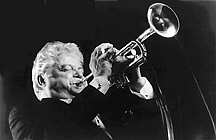
Famed trumpeter Maynard Ferguson died this week at the age of 78. Here’s the full story at All About Jazz.
This week on The Jason Crane Show, I’ll feature an archival interview with Maynard Ferguson.
There’s also a lot of great Maynard material at maynardferguson.com.
Comments closedMy good friend Jeff Vrabel is a music writer and all-around good guy. I’ll be linking to his reviews here at jasoncrane.org. Get started with these reviews of Psalm One and The Sadies. And why not put Jeff’s site in your RSS reader while you’re at it? It’s at JeffVrabel.com.
Comments closed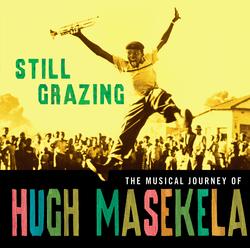
This week’s show features a never-before-heard interview with trumpet legend Hugh Masekela. Check it out at thejasoncraneshow.com.
Comments closedI went to see LEONARD COHEN I’M YOUR MAN again tonight. That’s right — three times in four days. The movie closed tonight at the Little here in Rochester, so if you didn’t see it, you’ll have to wait for the DVD or travel to another city.
I really can’t explain what it is about this film that grabs my guts so strongly. The music is amazing, of course, as is the poetry. The collection of voices. The way Cohen-as-guru is mixed in among the songs. The obvious awe and reverence his words and music inspire in the other musicians.
Maybe I’m just in the right place in my life to be open to this music and this man and this experience.
In any case, I’m so thankful that The Little brought this movie to Rochester. Kudos to Rob Russell, the new executive director!
Comments closed
Legendary Brazilian composer Moacir Santos died August 6. Do yourself a favor and pick up his recent 2-CD collection Ouro Negro. You can get it with the link below. Santos was a real genius, and a big favorite of mine when I hosted Traffic Jam and played “The Latin Set” each day. Here’s an obituary from All About Jazz.
Comments closedTonight I went to see LEONARD COHEN I’M YOUR MAN again, this time in the company of my wife Jennifer. If anything, it was even better tonight. Jen and I looked at each other with tears running down our cheeks during several of the songs, including Antony’s transcendent version of “If It Be Your Will” and the blood-rushing “Anthem” as sung by Julie Christensen and Perla Batalla. GO SEE THIS FILM!
Comments closedTonight, I had the most affecting experience I’ve had in a movie theater in a long time. I went to see LEONARD COHEN I’M YOUR MAN during its one-week run at the Little Theatre in Rochester.
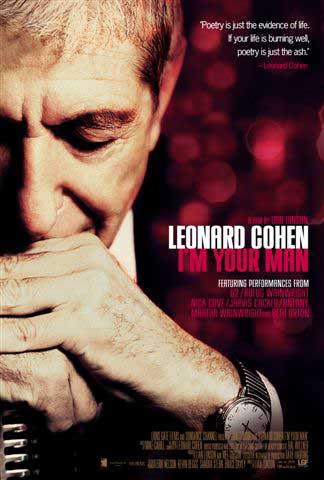
Part concert film, part documentary, LEONARD COHEN I’M YOUR MAN features a tribute concert from Sydney, Australia interspersed with interviews with Cohen and others. The concert is awe-inspiring, and the lineup tells you why: Rufus Wainwright, Martha Wainwright, Kate and Anna MacGarrigle, Nick Kave, Antony, Beth Orton, Teddy Thompson, Linda Thompson, Jarvis Cocker, U2 and many more. Cohen’s words and music are so sharp and beautiful that I found myself laughing by the end as a reaction to the emotion that just built and built throughout the film.
If this film is playing anywhere near you, go see it. You’ll find a list of cities at the film’s Web site.
Comments closed
Jazz trumpeter and composer Malachi Thompson has died. Read a tribute to this musical pioneer.
Comments closedMy review of the 2006 Rochester International Jazz Festival — written as a track list for a mixtape — is now at All About Jazz. Enjoy!
Comments closedI watched the documentary Miles Electric: A Different Kind of Blue tonight, having seen the first half two years ago at the Rochester International Jazz Festival. About 25 minutes in, percussionist and Miles sideman Mtume drops this:
You cannot create new music without access to new colors. Unfortunately, jazz — to me — stopped developing when the premier jazz creators did not want to accept the reality of electronics. Look man, when the piano, the tempered scale, was created — the 440 — that was the synthesizer of its time. I’m sure there were some harpsichord players walking around talking about “they’re not keeping it real.”
Comments closed